With conifers
One of the most popular types of rock gardens is a volumetric composition in the form of a mound of stones and conifers. To create a harmonious decorative area, dwarf plants are usually used, which fit organically into this corner of the landscape. The advantage of evergreens is that they grow slowly, without hiding the stones.
European larch Pendula, Japanese spirea, and prickly spruce Glauca Globosa are suitable. The multi-tiered rock garden is complemented by large boulders and plants, and pebbles are poured between them.
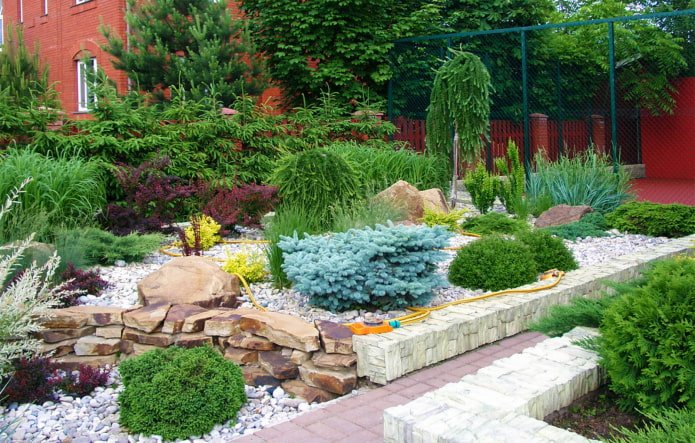
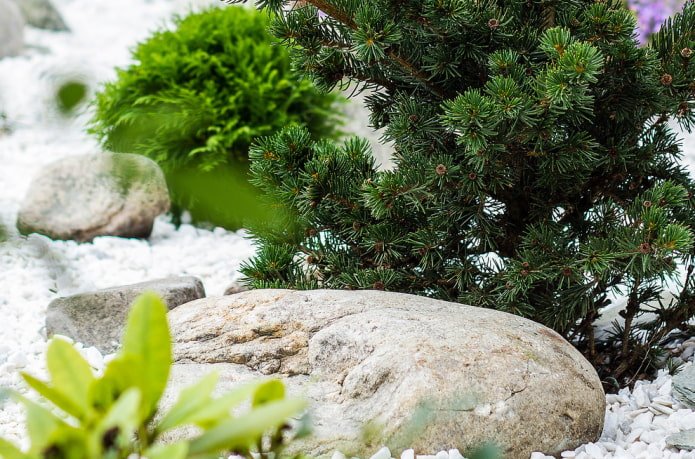
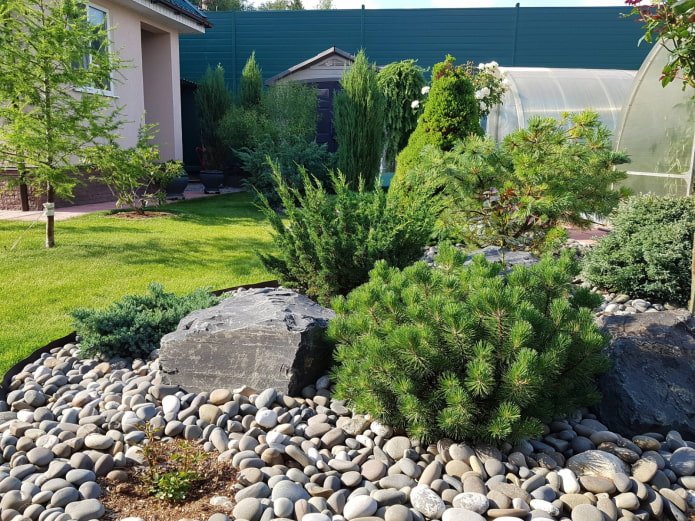
With a pond
If you want to break up the static nature of a rock garden, include an artificial pond or a waterfall with a stream in the composition. For such a rock garden, landscape designers recommend using rounded stones, as if polished by waves, and sea pebbles.
The source should be located on top of the stone embankment or under it, disguising the pipe: this way the waterfall will look as natural as possible. Moisture-loving plants (cattail, hosta) will hide the water supply hose. For landscaping the pond, you can use globeflower and sedge, which naturally grow near ponds.
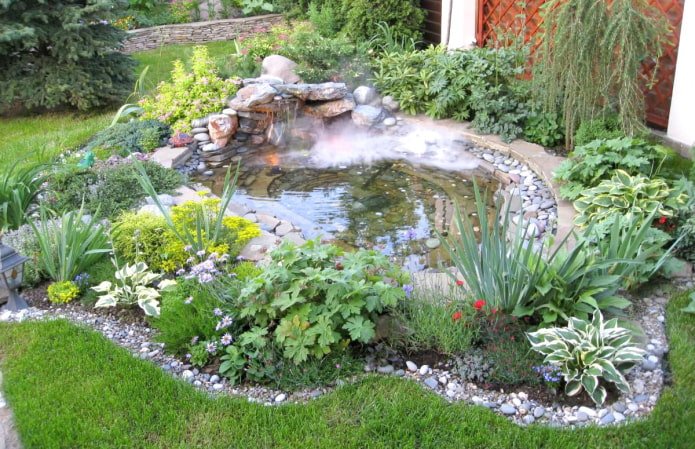

In the English style
A rock garden in this style is the embodiment of practicality. A restrained composition of stones is built around perennial plants and lawn grass, so it has a lot of greenery. Combine several types of junipers, mountain pine, dwarf thujas, as well as cereals and thyme to get a classic rockery.
It will not require special care, as it will not change its appearance for a long time. Carefully cover the composition for the winter to preserve the beauty of the “British” corner of the garden.
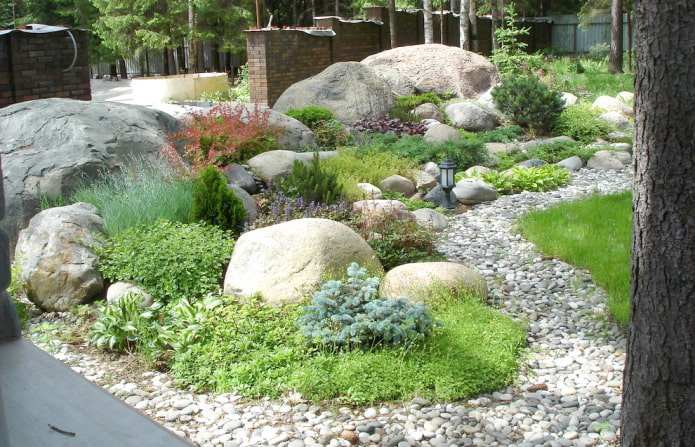
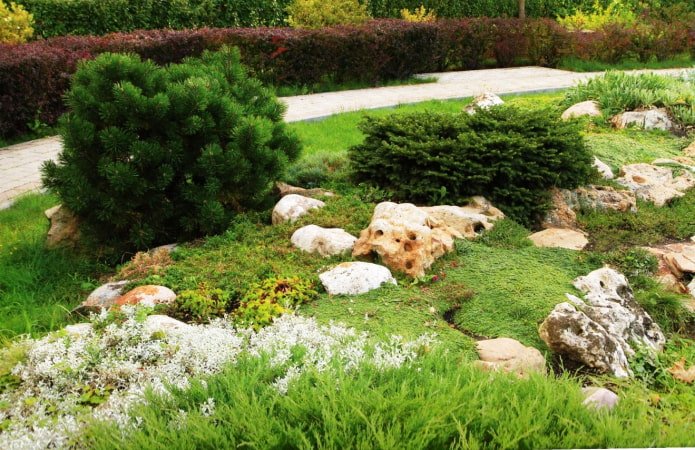
Border rock garden
Such rock gardens perform not only an aesthetic, but also a utilitarian function, creating a picturesque border and separating the path from the lawn or flower bed. The rock garden is decorated with unpretentious plants, crushed stone and pebbles. To illuminate the path, solar-powered garden lights are used, which stand out against the background of stones.
A stone garden looks great on a narrow area between the path and the fence, visually uniting them. This is a great way to arrange a flower garden where there is not enough space for ordinary, tall plants.
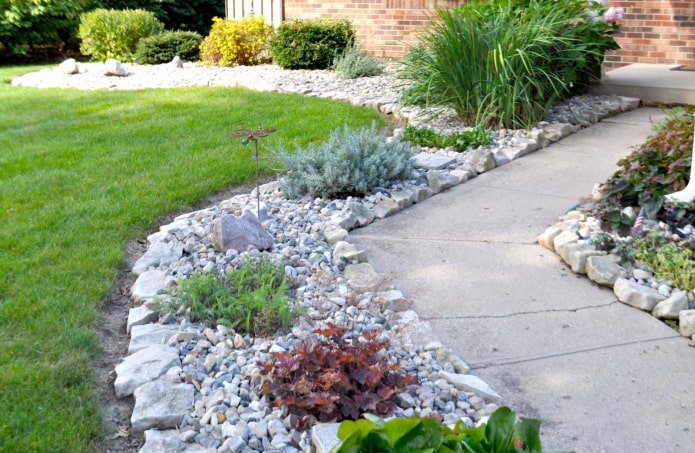
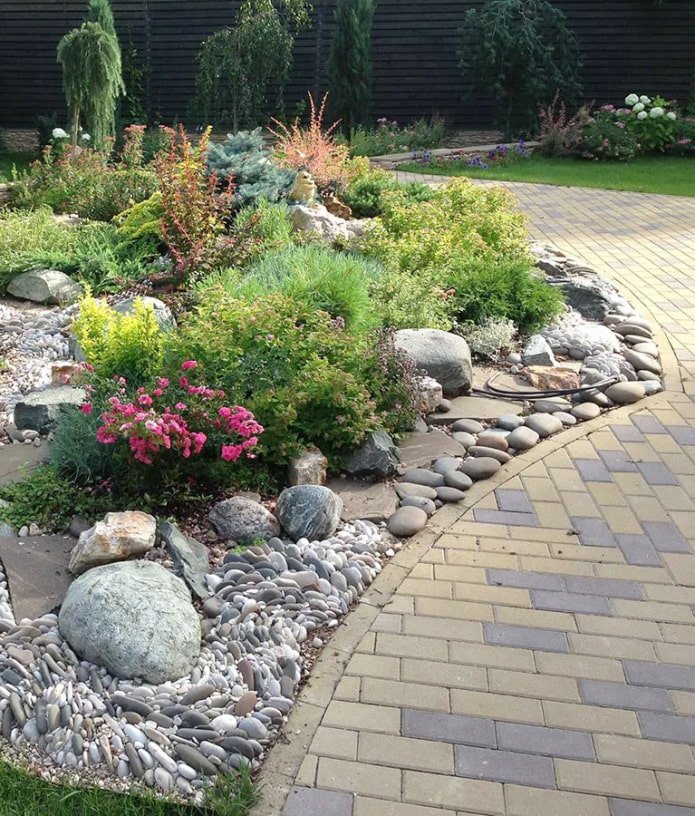
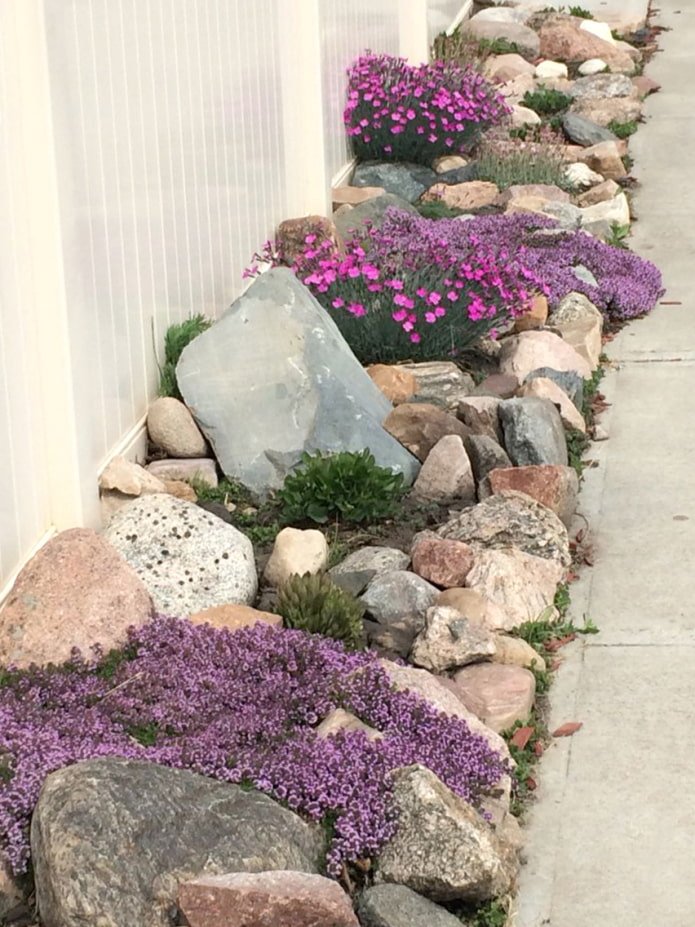
Alpine lawn
A real corner of nature, which associated with the high-mountain Alps – a rock garden lined with stones resembling rock fragments, combined with carpet saxifrage, edelweiss and carnations. A miniature copy of an alpine meadow, unlike an alpine garden, is located on a fairly flat area and should not be exposed to sunlight.
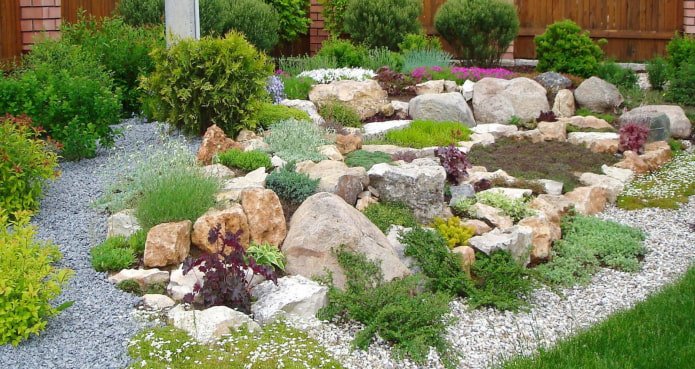
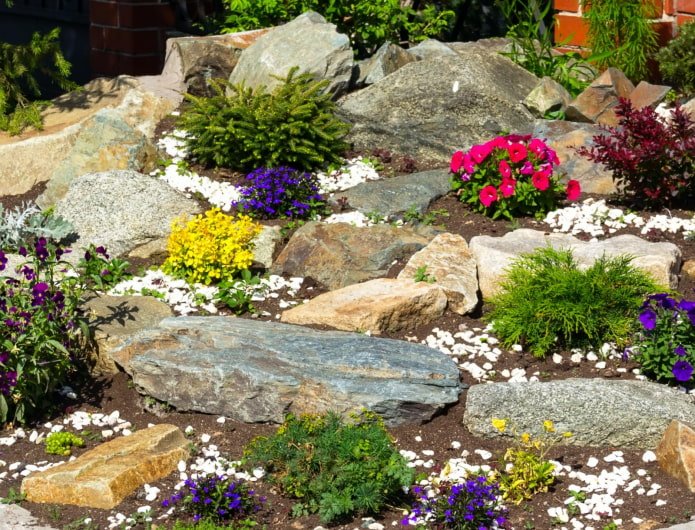
Japanese garden
The peculiarity of Asian rock gardens is that the main attention in their design is paid to stones. To make the composition look original and authentic, give preference to smooth boulders, as well as moss and miniature conifers. In such a rockery, small ponds, Japanese-style decor, and wooden elements are appropriate.
In the center of a stone flowerbed, designers often lay out artistic figures from pebbles in the form of ornaments, animals, or flowers. This approach requires not so much experience as careful preparation with sketches and material calculations. A Japanese rock garden can be created even on a small plot.
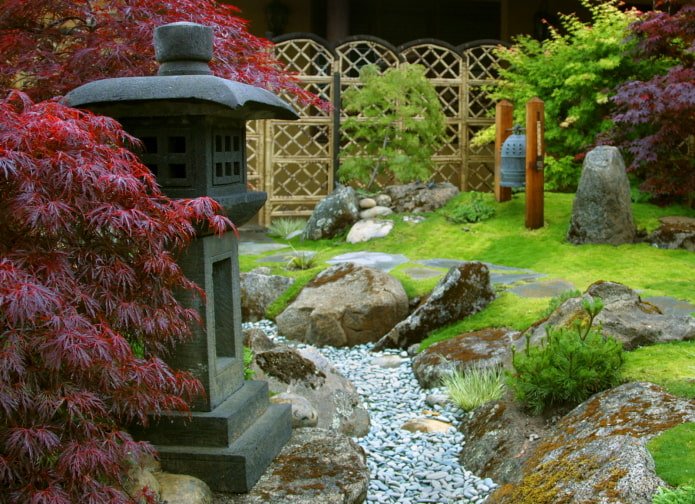
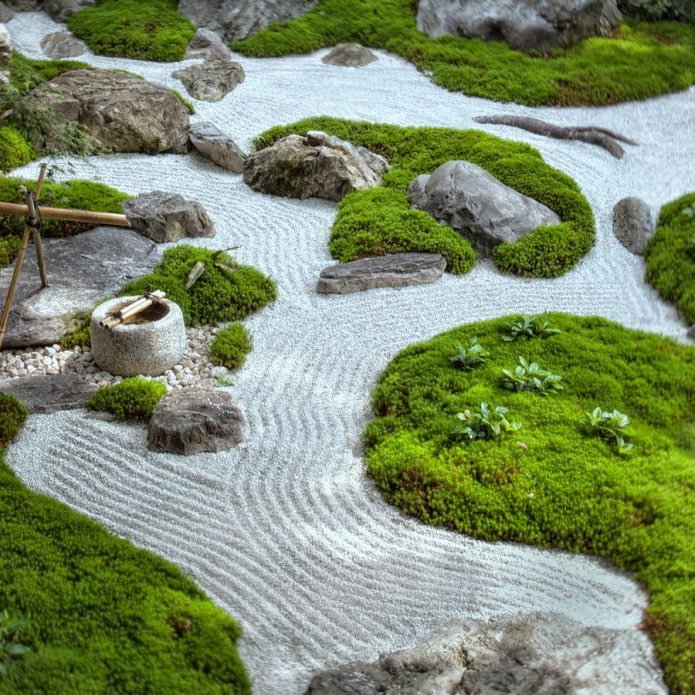
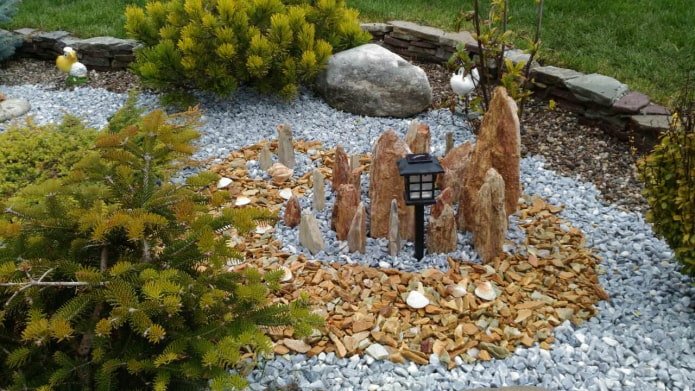
Mini rock garden
We are talking about a compact rock garden with miniature plants. Various containers serve as the basis for the composition: ceramic pots, jugs, artificial stones with indentations. The unusual decoration is placed in a prominent place: at the porch, in the center of the garden, near the entrance to the gazebo.
Undemanding plants are suitable for a small rock garden: young, succulents, moss. It can be decorated not only with picturesque porous stones and pebbles, but also with decorative elements.
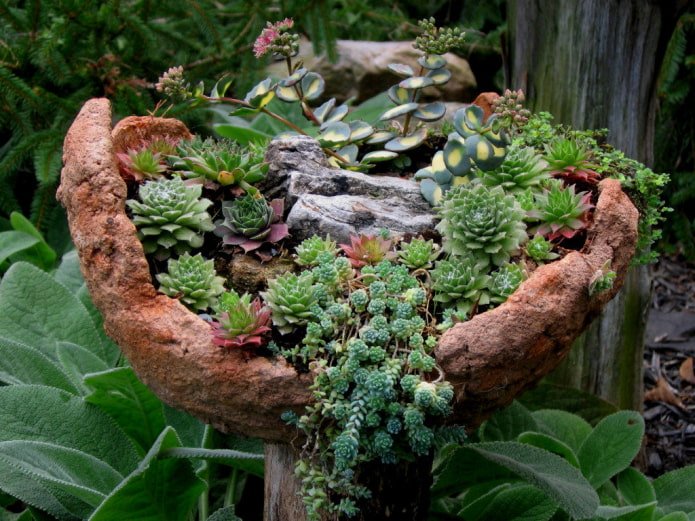
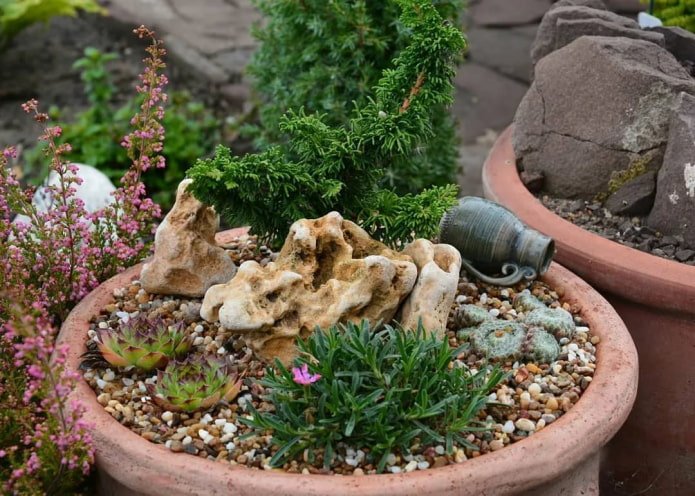
Flower
The main part of such a rock garden is made up of ground cover herbaceous perennials with abundant flowering, as well as creeping plants. They harmoniously combine with stones and pebbles, located in groups or carpet spots. To form a composition, you can use stone blocks that rise slightly above the flowers.
A colorful flowerbed is made up of bugleweed, rock arabis, sedum and fern. You can also plant annuals: lobelia, purslane, petunia.
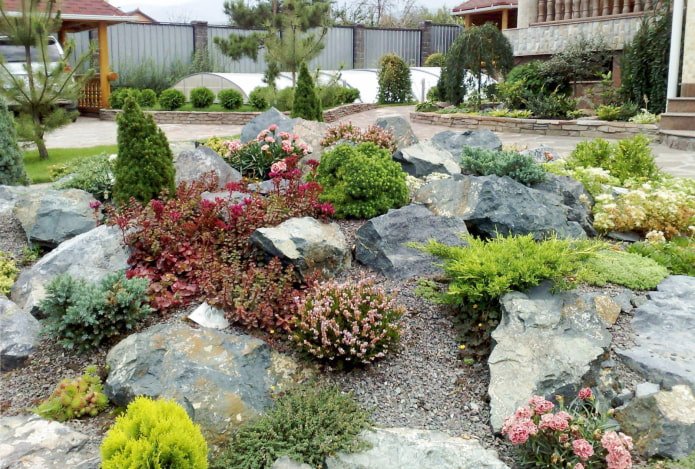
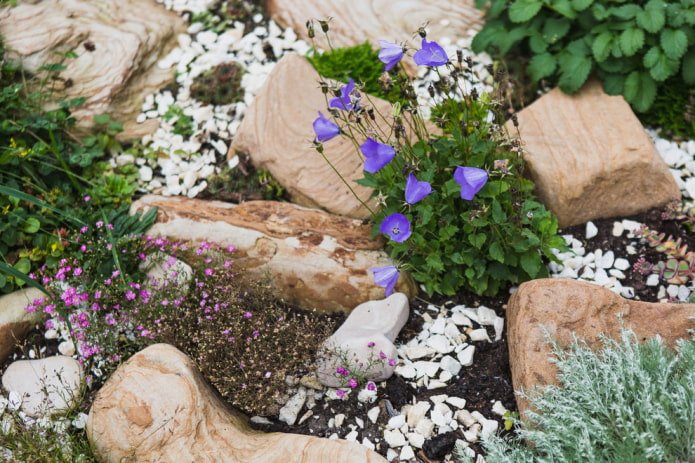
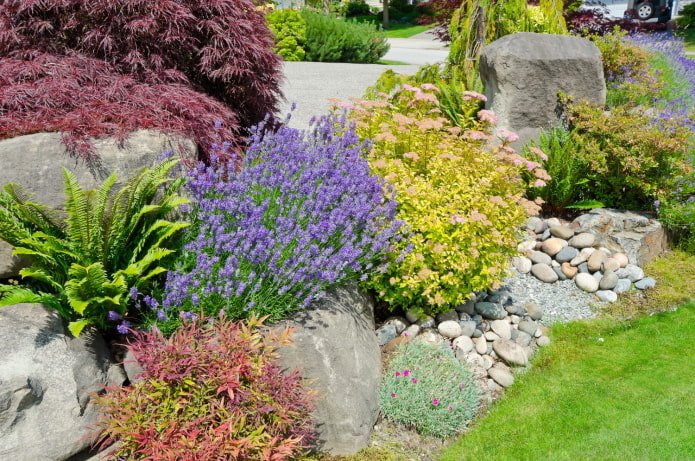
Dry stream
The best result in its design is achieved on a relief area. In a dry creek, the role of water is played by gravel, sea pebbles and sand. It goes well with the Japanese style of landscape design. It is decorated with hostas, irises and low-growing cereal grasses. It can start in an overturned jug or rocky hill.
A dry stream in the style of a natural garden is complemented by daylilies, bright barberries, sedums and other groundcover plants.

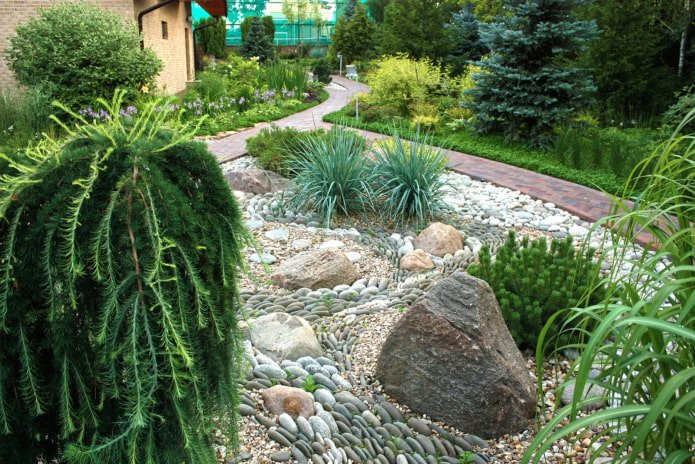
On a slope
Looks good where there is a natural depression in the ground. Slopes are reinforced with dug-in boulders, between which low-growing conifers, bergenia, hostas, and creeping plants are planted. A waterfall or artificial spring is a wonderful addition to such a garden.
If there is no soil slope, you can create it yourself or build a terraced rock garden. It is a retaining wall made of stone blocks laid on top of each other. The elevations must be strong and include areas for planting plants. The larger the structure, the more impressive the composition and cascading plantings look.
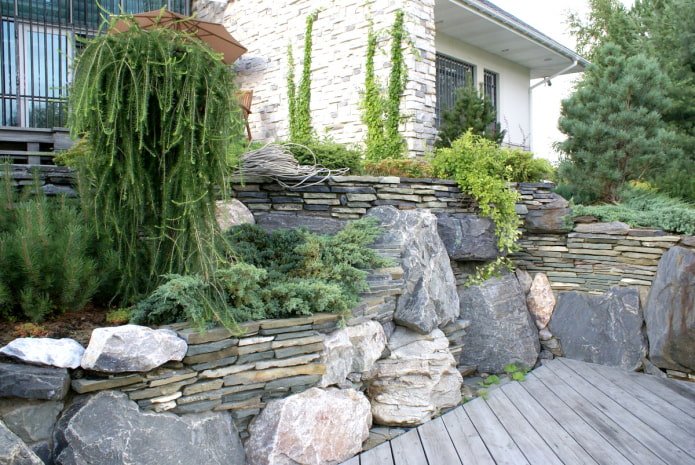
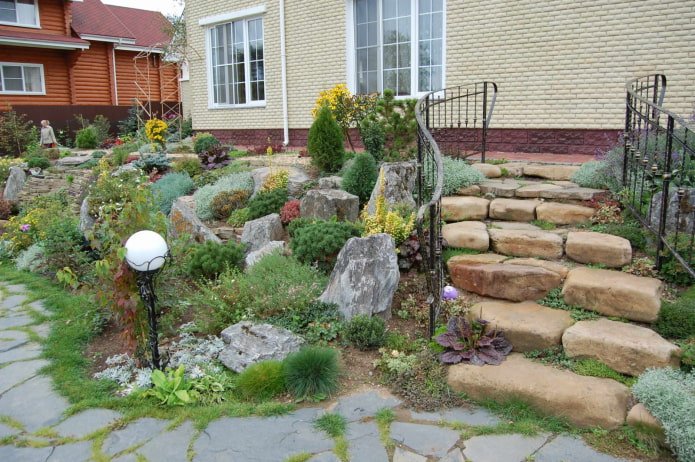
Any gardener can create most types of rockeries. With minimal care, this corner of your garden will always please the eye.
Now reading:
- Green ceilings: more than 60 photos and the best ideas of matte and glossy style
- Gold Wallpaper in Design: 60 Best Examples and Inspiration for Interiors
- ways to use geotextiles in the country that will be useful for every gardener.
- French curtains: more than 70 photos and unique ideas for your interior.
- Discover the Versatile Ford Galaxy Vehicle